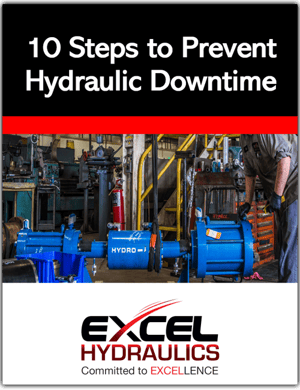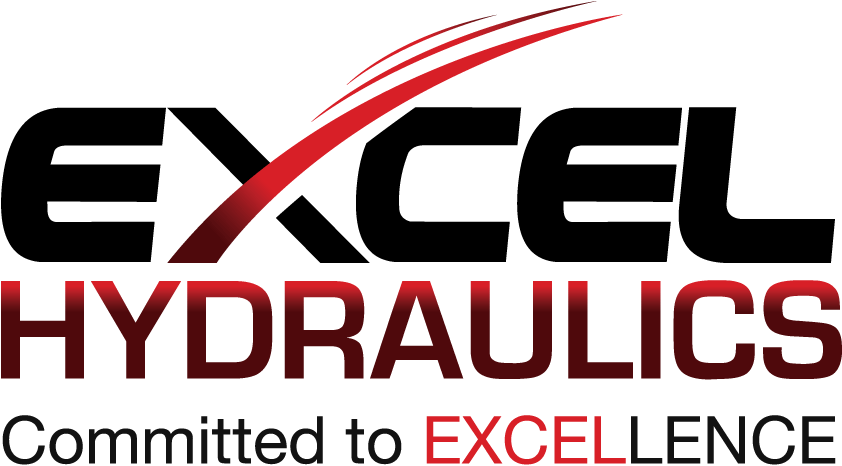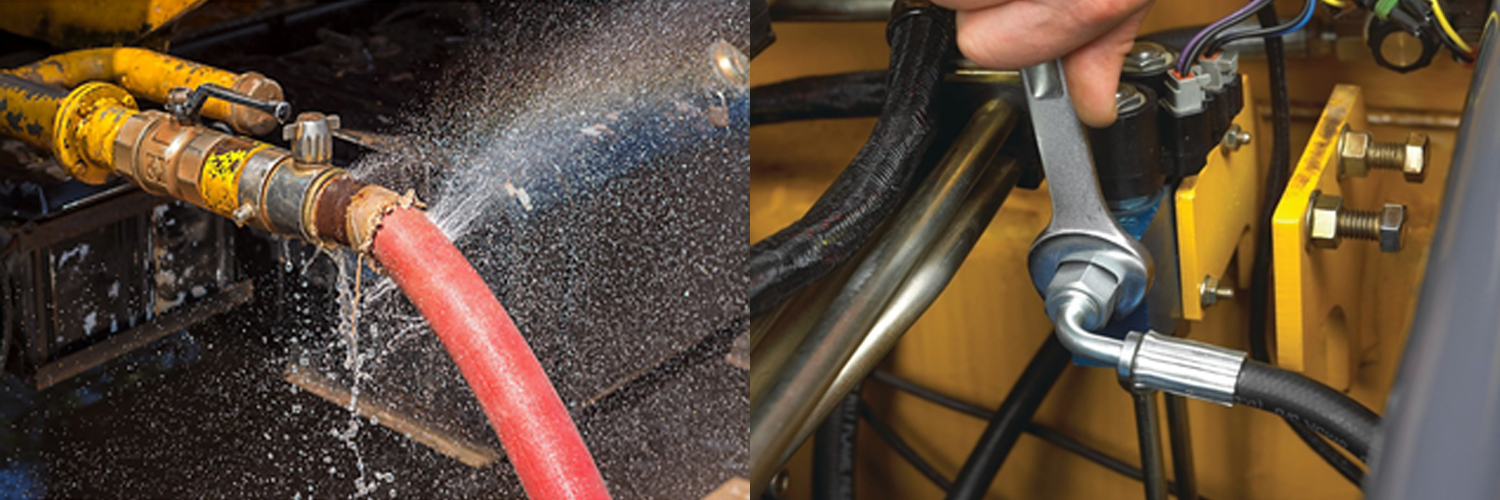You can’t prevent or repair hydraulic equipment leaks if you don’t understand exactly what causes them. In my experience if you take the time to educate yourself on the basics of what causes hydraulic leaks, you could save yourself thousands of dollars in unnecessary hydraulic repairs. I also feel there is no such thing as a permanently sealed hydraulic system... trust us, we’ve done the leg work and haven't been lucky enough to find the perfect hydraulic system that never leaked!
What causes hydraulic equipment to leak?
There are countless scenarios where reliable hydraulic equipment can begin to leak hydraulic fluid. In my experience, leaks can happen for any number of reasons. These can include poor design, excessive wear & tear, incorrect tolerances, improper scoring and in some cases, human error or poor assembly. The reason for a major power loss in most hydraulic systems are leaks in pumps and/or motors. This is often caused by (or the result of) excessive clearances.
External leakages are obviously the most recognizable. But what happens when you can’t see, touch or smell a hydraulic leak when it's happening? Here are a few prevention and repair tips every operator should know to keep a hydraulic system running as efficiently as possible...
Hydraulic Leak Prevention Tips
When it comes to hydraulic leaks, you don't ever want to find yourself playing the role of a firefighter. Think about it, if you could prevent a fire from happening before it started, wouldn’t you? A huge part of a good proactive hydraulic maintenance plan is to PREVENT leaks when at all possible. Here are a few tips...
- Maintain Your Clamps - hydraulic clamps should be spaced about every 5-8 feet apart and tightened regularly - the goal here is to eliminate movement of pipes and consequent leakage
- Reduce Shock Spikes - when shocks are not properly absorbed, they can cause leaks and damage to lines. Pro Tip: install an accumulator, add directional valve pilot chokes, or use cross port relief valves
- Use Quality Parts - hoses and fittings that conform to SAE and ISO standards often have characteristics that reduce leakage. Pro Tip: make smart investments when it comes to your parts or it will cost you in the long run!
- Consider Proper Lubrication - most seals (rod seals specifically) can be a real challenge because a thin film of lubricant is required between the rod and seal surface to function properly. Without lubricant, seals undergo premature wear and will subsequently leak; but lubricant that is too thick can also cause leaks because the excess will eventually need to go somewhere. Pro Tip: always check machine and lubrication specs to find the perfect balance
- Install Flow Meters - placing flow meters on the case drains of pumps and motors will help you determine when to overhaul components - usually before the system is severely compromised
- Conduct Audits - when you incorporate leak audits into your hydraulic maintenance plan, you will experience more control in preventing hydraulic downtime. Audits should be done semi-annually. Pro Tip: OIL-GLO® 44 is a good product to have on hand. It’s concentrated fluorescent oil dye is compatible with synthetic and petroleum-based fluids. When a leaking system is scanned with the OPTIMAX 400 flashlight, the dye glows a bright yellow/green at the source and exposes the leak’s location...cool huh?
- Consider Calculating Rates - most leakages are generally the result of fluid bypassing a piston seal through a worn seal or cylinder barrel. Low fluid viscosity or excessive heat will increase your leakage rate and could cause unnecessary hydraulic downtime

To learn more about the effects of low fluid viscosity, click here to check out this blog post!
Hydraulic Leak Repair Tips
A repair can be as easy as tightening fittings to prevent pulsations, vibrations and thermal cycles which will eventually work fittings loose over time. This "quick fix" will usually be your first instinct. But it’s rarely the case that lose fittings are the root cause of your hydraulic leak. Repair all leaks immediately! Wasted time and lost production will add up quickly and can be a safety hazard, which will result in even greater loss.


Have you considered bellows (rod boots)? Piston rods may be the most vulnerable component in your entire hydraulic system. Even though wipers clean off a piston rod as it retracts into the cylinder, even small abrasive materials clinging to a piston rod can quickly cause seals to leak...
Pro Tip: Install bellows to shield the rod from contaminants during extension and retraction!
Here's what NOT to do...even in a pinch!
- Never Over Torque
- Never Leave the System Pressurized
- Never Reuse O-Rings
- Never Replace a Fitting with a Different Type of Fitting
When the time for repairs are necessary, having a prior relationship with a maintenance partner can determine the speed of your repair. Establishing a working relationship with an experienced hydraulic maintenance partner who knows your equipment, knows your business and is ready to respond when you experience ANY downtime can save you thousands of dollars when you have issues...and trust me, you will eventually have hydraulic issues if you don’t properly maintain your hydraulic equipment!
Are you looking for additional help with preventing hydraulic downtime? Consider downloading a copy of our popular eBook "10 Steps to Prevent Hydraulic Downtime" below...you'll be glad you did!
Download Your Copy of our 10 Steps to Prevent Hydraulic Downtime eBook Here...
 |
If you have additional questions about your options for preventing and repairing hydraulic leaks, please pick up the phone and give us a call at 856-241-1145, we can create a plan just for you!

